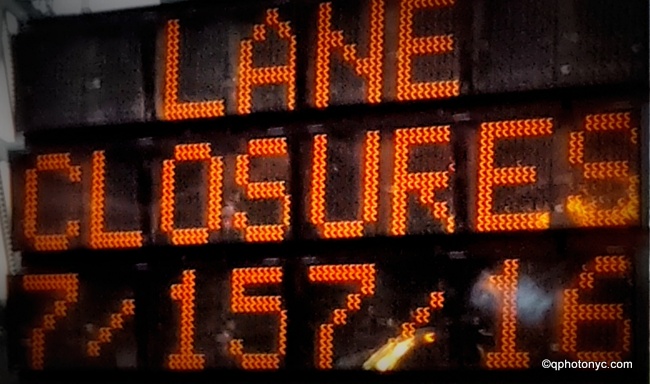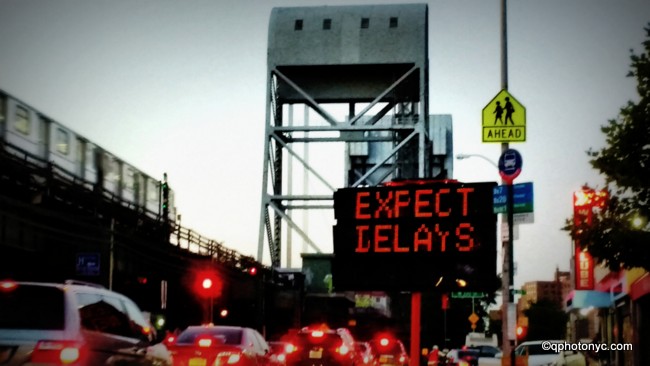July 15, 2017
Roadwork on Inwood’s Broadway Bridge this weekend will cause traffic delays due to lane closures. A sign on Broadway at W 207 St. advises drivers to use alternate routes, e.g. the University Heights Bridge. The work is scheduled for both Saturday and Sunday.

Broadway Bridge
The Broadway Bridge, a lift type, is located between West 220th Street in Manhattan and West 225th Street in the Bronx. Three tracks of the IRT subway are carried on its upper deck, and a four-lane two-way roadway with sidewalks on either side is carried on its lower deck. The two roadways each measure 10.36m and the sidewalks are 1.83m wide.
The first bridge at this approximate site, a then-shallow spot where the waters of the Harlem River and Spuyten Duyvil Creek joined, was built in 1693 and was known as the “Kings Bridge,” as everyone except soldiers and other representatives of the king had to pay tolls to use it. The construction of the alternative “Free Bridge” by merchants and farmers in 1758 was considered a significant revolutionary act. Both the Kings and Free Bridges had draws to admit small craft. The Free Bridge was built of dry rubble and wooden beams, and was destroyed by the British when they routed Washington’s troops from New York in 1776; it was rebuilt shortly after the war. In the late 19th century, the dredging and widening of the river and development on both sides created the need for a new bridge. Alfred P. Boller designed a single-deck steel swing bridge, which opened in 1895. Within years the original span had to be replaced by a double-deck swing span to accommodate the extension of the subway, and the old one was floated downstream to become the University Heights Bridge. The double-deck swing span in turn was replaced by a double-deck lift span in 1960.
source: NYC DOT

